Reskilling and Upskilling: The Smart Strategy for Workforce Growth
Regardless of your business size, prioritizing employee training positively impacts your bottom line, employee productivity, and engagement. According to a global survey, companies are 17% more productive and 21% more profitable when they offer employee training. The right training program differs from business to business, but in order to develop the most beneficial program for our company, business owners must focus on their reskilling and upskilling efforts.
Upskilling Overview
Upskilling aims to refine an individual’s current abilities to improve their knowledge and competence in topics or skills related to their role through training. The primary goal of upskilling is to improve employee performance, increase efficiency, and facilitate career advancement or internal promotions. For example, a construction worker might take a class on hypothermia management to better guide their team in handling cooler weather and treating hypothermia effectively.
Reskilling Overview
Reskilling refers to the process of acquiring new skills for a different position or career path. These skills aren’t related to their current expertise, normally representing a career or industry shift. For example, a Payroll Specialist who wishes to move into sales might enroll in a course or program that focuses on sales techniques.
Benefits of Reskilling and Upskilling
On average, companies that focus on reskilling and upskilling efforts see a 24% higher overall profit margin. Although these two training processes differ, they share many of the same benefits, ranging from improved efficiency to increased revenue, and beyond.
Gaining new skills or certifications strengthens the workforce by expanding its collective knowledge and skills. When individuals or teams learn new concepts, they can share that expertise with others, effectively closing existing skills gaps and enhancing overall performance within the organization. These processes enhance the overall capabilities of the team, strengthening overall efficiency, productivity, and employee performance. With a wider range of skills and knowledge, employees can boost their efficiency, streamline processes, and develop creative solutions to common challenges faced by the company.
Implementing Reskilling and Upskilling Programs
Implementing training programs in your company can be challenging. A variety of moving parts must be managed for upskilling and reskilling efforts to be successfully implemented.
Assess organizational needs and skill gaps
Begin by identifying the skills that your company currently lacks and those it will need in the future. Engage with your existing workforce by holding a town hall meeting to brainstorm training topics or skills employees are interested in learning or developing. Creating a training program that resonates with employees and aligns with their interests will increase their likelihood of participation and engagement. Make sure to review your strategic goals and align them with your workforce’s capabilities and needs.
Define Clear Objectives
Define the goals of your upskilling and reskilling initiatives. Objectives may include reducing employee turnover, increasing efficiency, introducing new technologies, and enhancing the client experience. After identifying the primary goal of your upskilling or reskilling program, you can create relevant content and training modules that align with this objective.
Include a Mix of Training Platforms
To effectively expand the new skill or learning topic across your workforce, it is beneficial to provide a variety of activities and training. A comprehensive approach may include online courses, interactive workshops, video tutorials, written assessments, group discussions, and hands-on activities. This diversity not only accommodates various learning styles but also provides a deeper understanding of the material. Many organizations streamline this process by using a Learning Management System (LMS), which centralizes training content, tracks progress, and facilitates easier access for employees to manage their development journey.
Foster a Culture of Continuous Learning
One way to promote your upskilling and reskilling initiatives is to communicate these opportunities to your workforce consistently. Sending out emails or mentioning training opportunities during meetings can help remind your workforce of your offerings and how they can benefit their careers.
Recognizing learning achievements and course certifications is an excellent way to promote continuous learning within your workforce. Whether it’s sending a company-wide email or giving an employee a shout-out during a meeting, highlighting employee successes and career growth can boost morale and increase loyalty among your workforce.
Reskilling and Upskilling Your Workforce
Investing in upskilling and reskilling programs is not just an investment in your employees; it’s an investment in your company’s future. Providing training opportunities enhances your bottom line, boosts company efficiency, and fosters employee loyalty. While the benefits of offering training are numerous, creating a program or implementing training sessions on your own can be a challenge.
Group Management Services (GMS) is a third-party administrator that can help manage your workforce, save you money, and assist with employee training and development. Our human resources (HR) team can create personalized training tailored to your workforce, allowing you to choose the specific skills or topics that you want your team to learn. Our experts can also support you with employee management, recruitment, and retention efforts.
Ready to build a future-ready workforce? We can help. Contact us to learn more.
